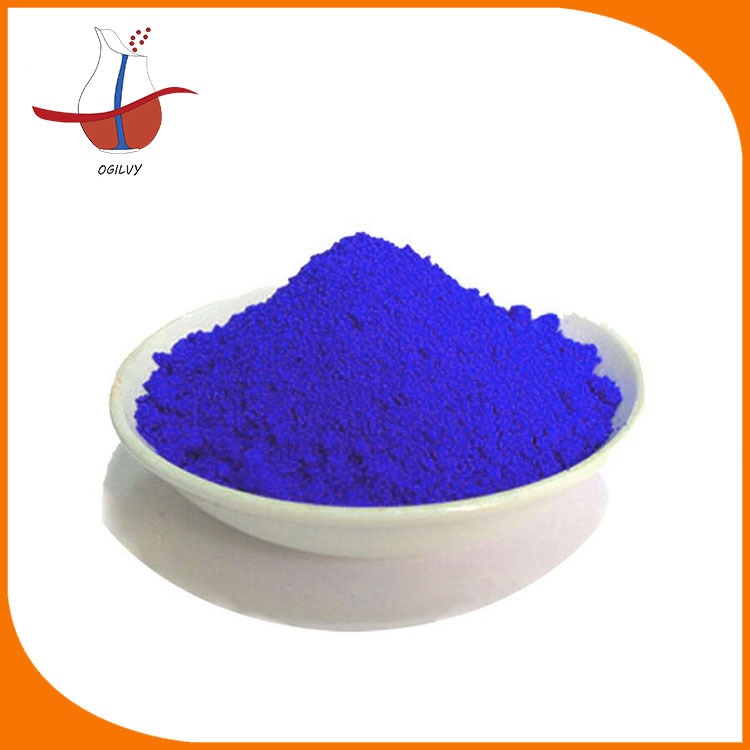Different types of organic pigment
2022-02-17
Azo pigment(organic pigment)
Water insoluble organic compounds containing azo group (- n = n -) in molecular structure are the most variety and yield among organic pigments. Azo pigment is a diazo component prepared by diazotization of aromatic amine or heteroaromatic amine, and then coupled with coupling components such as acetylaromatic amine, 2-naphthol, pyrazolone, 2-hydroxy-3-naphthoic acid or 2-hydroxy-3-naphthoyl aromatic amine to form water-insoluble precipitation, that is, general azo pigment. The synthetic method is basically the same as that of azo dyes, but the latter is water-soluble. Common azo pigments are orange, yellow and red pigments, such as YONGGU orange RN (C.I. Pigment Orange 5), golden light red (C.I. Pigment Red 21) and benzidine yellow G (C.I. Pigment Yellow 12). In order to improve the properties of pigments such as light resistance, heat resistance and organic solvent resistance, two molecules can be condensed into macromolecules by aromatic diamine. The pigment thus prepared is called macromolecular pigment or condensed azo pigment, such as macromolecular orange 4R (C.I. Pigment orange 31) and macromolecular red R (C.I. Pigment Red 166).(organic pigment)
Lake(organic pigment)
Water soluble dyes (such as acid dyes, direct dyes, basic dyes, etc.) are water-insoluble pigments formed by interaction with precipitant. It has bright color light, complete chromatography, low production cost and high light fastness than raw water-soluble dyes. Precipitants are mainly inorganic salts, acids, carriers, etc. Inorganic salt precipitation is the reaction of barium chloride, calcium chloride and manganese sulfate with water-soluble dyes as precipitants to produce water-insoluble salts of barium, calcium and manganese, such as YONGGU red f5r (C.I. Pigment Red 48:2) and Aurora Red C (C.I. Pigment Red 53:1). Acid precipitation uses phosphoric acid molybdic acid, phosphoric acid tungstic acid and tannic acid as precipitants to react with water-soluble basic dyes to form insoluble lakes, such as sun resistant rose Lake (C.I. Pigment Violet 1) and radiant green lotus (C.I. Pigment Violet 3). Carrier precipitation is to deposit water-soluble dyes on the surface of aluminum hydroxide, barium sulfate and other carriers to form water-insoluble lakes, such as acid golden yellow Lake (C.I. Pigment orange 17) and sun resistant lake blue lake (C.I. Pigment Blue 17).

Water insoluble organic compounds containing azo group (- n = n -) in molecular structure are the most variety and yield among organic pigments. Azo pigment is a diazo component prepared by diazotization of aromatic amine or heteroaromatic amine, and then coupled with coupling components such as acetylaromatic amine, 2-naphthol, pyrazolone, 2-hydroxy-3-naphthoic acid or 2-hydroxy-3-naphthoyl aromatic amine to form water-insoluble precipitation, that is, general azo pigment. The synthetic method is basically the same as that of azo dyes, but the latter is water-soluble. Common azo pigments are orange, yellow and red pigments, such as YONGGU orange RN (C.I. Pigment Orange 5), golden light red (C.I. Pigment Red 21) and benzidine yellow G (C.I. Pigment Yellow 12). In order to improve the properties of pigments such as light resistance, heat resistance and organic solvent resistance, two molecules can be condensed into macromolecules by aromatic diamine. The pigment thus prepared is called macromolecular pigment or condensed azo pigment, such as macromolecular orange 4R (C.I. Pigment orange 31) and macromolecular red R (C.I. Pigment Red 166).(organic pigment)
Lake(organic pigment)
Water soluble dyes (such as acid dyes, direct dyes, basic dyes, etc.) are water-insoluble pigments formed by interaction with precipitant. It has bright color light, complete chromatography, low production cost and high light fastness than raw water-soluble dyes. Precipitants are mainly inorganic salts, acids, carriers, etc. Inorganic salt precipitation is the reaction of barium chloride, calcium chloride and manganese sulfate with water-soluble dyes as precipitants to produce water-insoluble salts of barium, calcium and manganese, such as YONGGU red f5r (C.I. Pigment Red 48:2) and Aurora Red C (C.I. Pigment Red 53:1). Acid precipitation uses phosphoric acid molybdic acid, phosphoric acid tungstic acid and tannic acid as precipitants to react with water-soluble basic dyes to form insoluble lakes, such as sun resistant rose Lake (C.I. Pigment Violet 1) and radiant green lotus (C.I. Pigment Violet 3). Carrier precipitation is to deposit water-soluble dyes on the surface of aluminum hydroxide, barium sulfate and other carriers to form water-insoluble lakes, such as acid golden yellow Lake (C.I. Pigment orange 17) and sun resistant lake blue lake (C.I. Pigment Blue 17).

We use cookies to offer you a better browsing experience, analyze site traffic and personalize content. By using this site, you agree to our use of cookies.
Privacy Policy
 English
English



